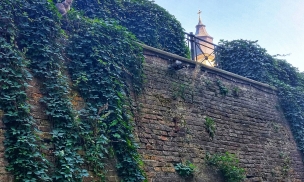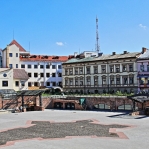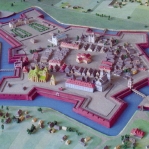Top 5 Interesting Facts About the Stanisławòw Fortress
The Stanisławòw fortress was built in a strategically advantageous location.
Andrzej Potocki’s purchase of the village of Zabolotiv played a decisive role in founding Stanisławòw. The site, surrounded on three sides by the waters of the two rivers and bordered by marshy banks, drew Potocki’s attention to its military and strategic advantages.
The fortress was constructed in a very short time — just five months.
The project was designed by François Corassini of Avignon. The city was conceived from the outset as a mighty fortress, enclosed first by wooden, then stone walls, as well as an earthen rampart and a wide moat.
Corassini was inspired by the concept of a "star city" by Italian architect Vincenzo Scamozzi.
This was a vision of a harmonious, compact urban structure resistant to modern methods of warfare. The design and construction followed the standards of the French architectural school.
François Corassini planned a street network with a central market square and town hall.
The square was oriented according to the cardinal directions. Streets either led directly to city gates or intersected at right angles, creating a convenient communication system between residential areas and strategic objects. Measurements were calculated in French toises (1 toise = 1.949 m).
Stanisławòw had two main gates — the Halych Gate and the Tysmenytsia Gate.
Named for the roads leading to Halych and Tysmenytsia, these grand entrances were adorned with black marble plaques bearing the city’s name and the Potocki family crest in gold. There was also a third entrance — the so-called Armenian wicket gate, leading to the town market. Three bridges connected to the gates and the wicket.
20.06.2025








